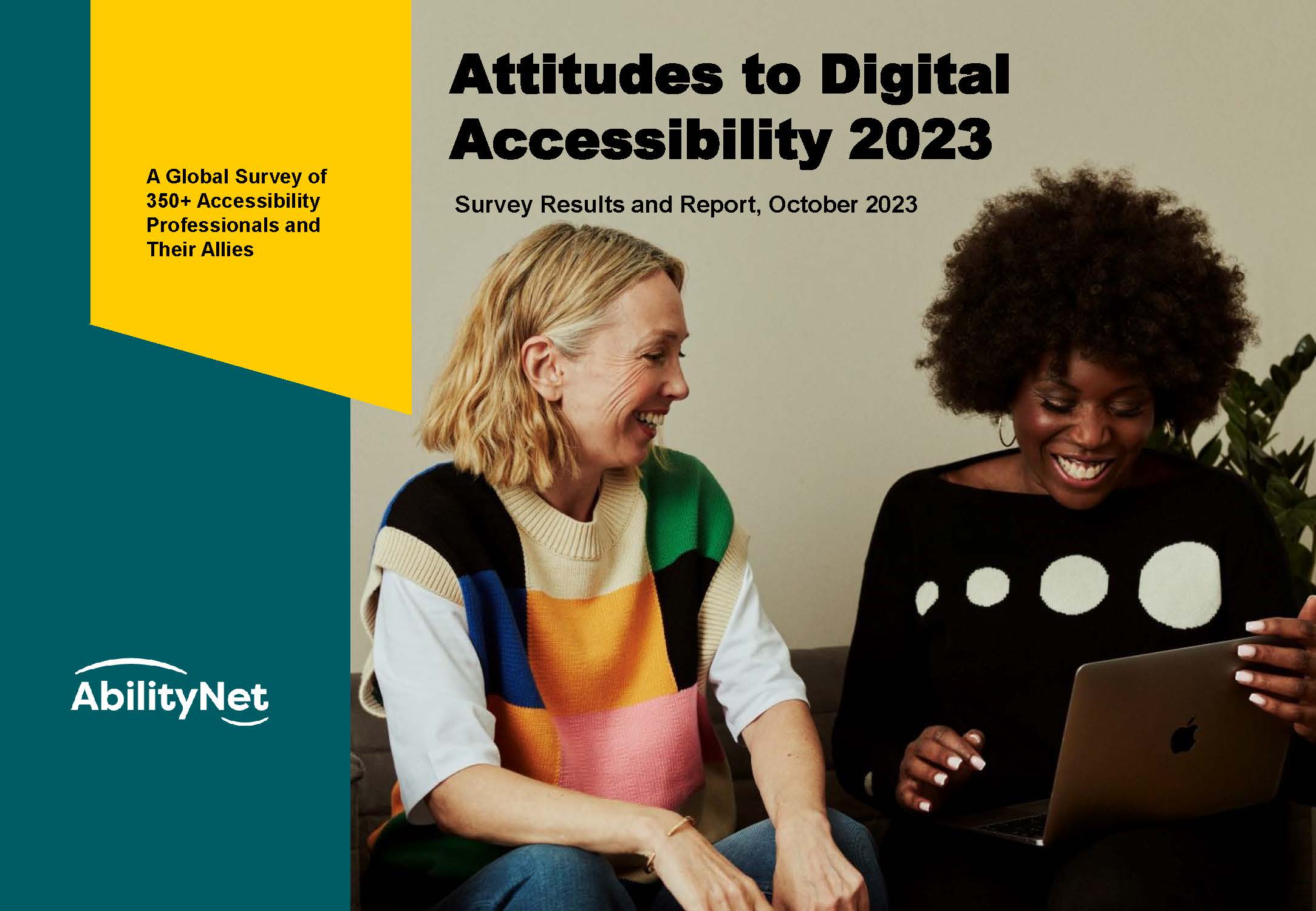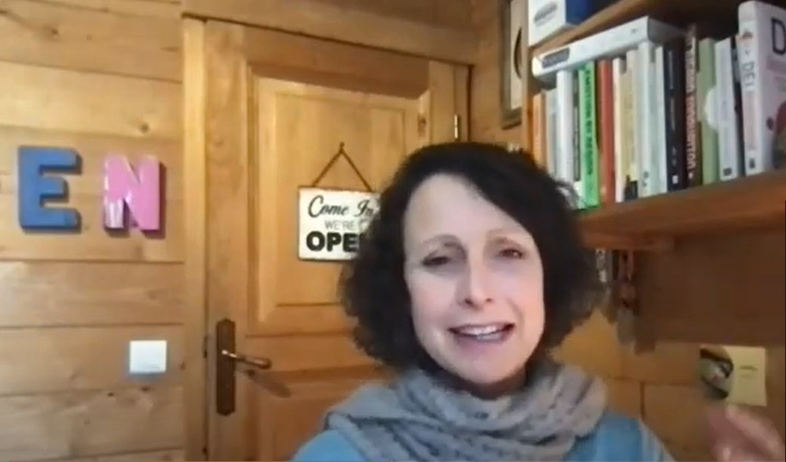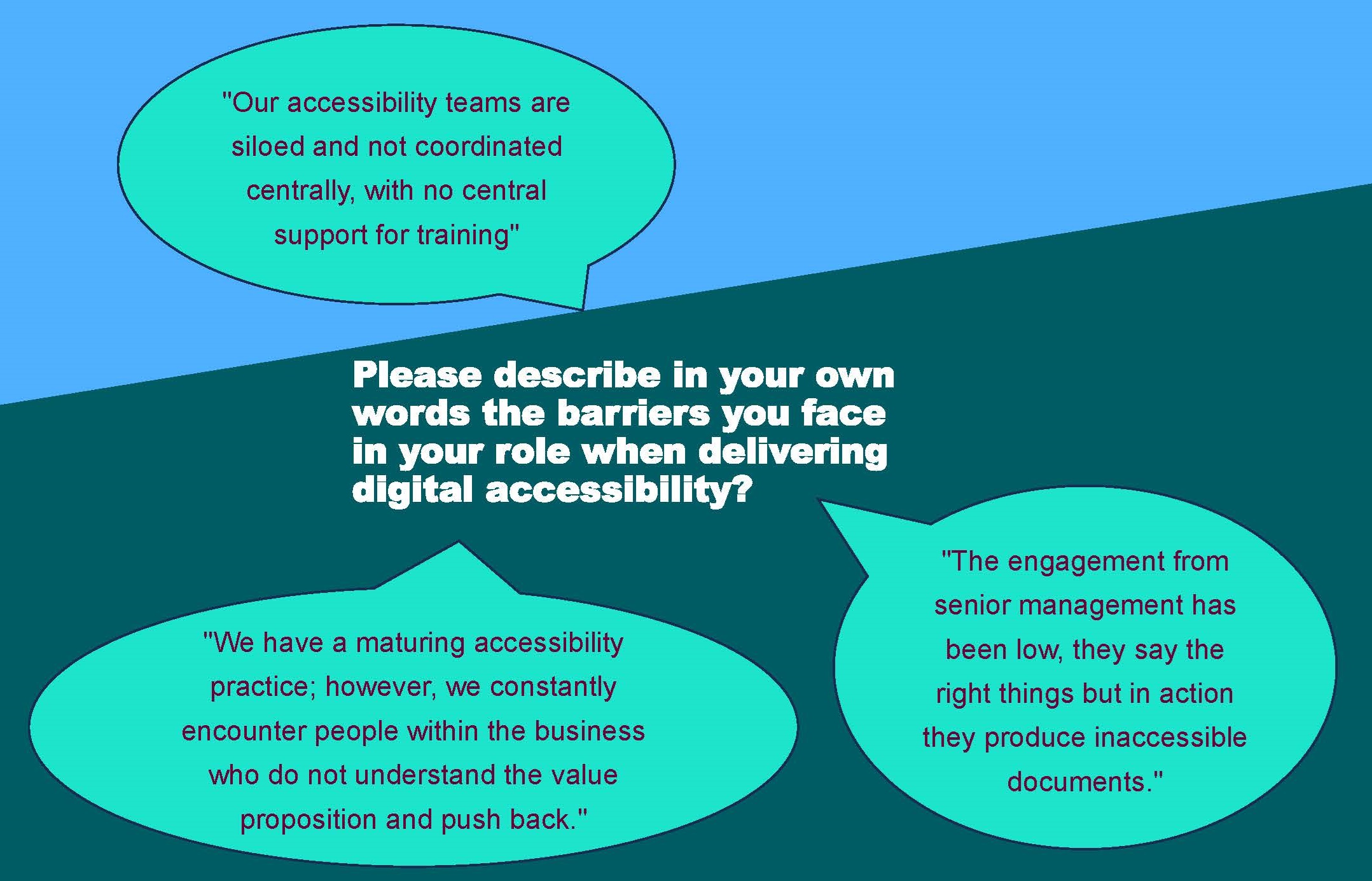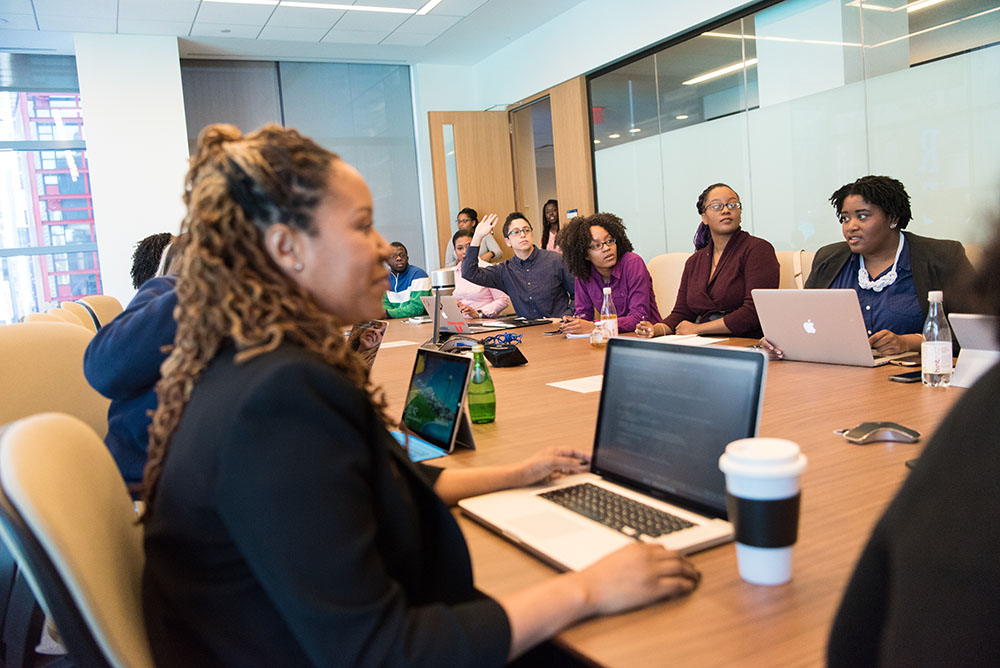 A global survey conducted by AbilityNet shows a clear divide between those organisations who are prioritising digital accessibility and those who are lagging behind.
A global survey conducted by AbilityNet shows a clear divide between those organisations who are prioritising digital accessibility and those who are lagging behind.
The findings of our Attitudes to Digital Accessibility survey 2023 indicate that organisations need to review where they ‘sit’ on the scale of accessibility leaders and accessibility laggards - otherwise the accessibility leaders will reap the benefits of their investment in accessibility, such as more inclusive workforces and increased customer satisfaction.
Delving into the leader characteristics
The survey was completed during September 2023 by 363 people from around the world, and we launched the report of its findings in a live webinar on 31 October.
Open Inclusion, a disability and age-inclusive research, design and innovation agency, worked with AbilityNet to analyse the survey results both this year and in 2022.
 Christine Hemphill, Open Inclusion's CEO, spoke on the webinar to discuss the findings, alongside fellow guest speaker Christopher Lee, Managing Director of IAAP (International Association of Accessibility Professionals).
Christine Hemphill, Open Inclusion's CEO, spoke on the webinar to discuss the findings, alongside fellow guest speaker Christopher Lee, Managing Director of IAAP (International Association of Accessibility Professionals).
"What we mean by 'leaders' is across the various characteristics of the questions, vision, leadership capability and procurement there are some ahead on a number of or all of them, and many characteristics or some that are falling behind or less confident on a range of elements," says Christine, describing what constitutes an 'accessibility leader' from the survey results analysis.
Download the survey report
Get the survey report
A summary PDF and a more detailed Word version are available to download.
Benchmark your accessibility
Respondents to the survey were asked to feedback on five key areas:
- Vision
- Leadership
- Processes
- Capability
- Procurement
The survey structure reflects five key topics covered in AbilityNet's Digital Accessibility Maturity Model.
If you're wondering if your organisation is more laggard than leader, or where your organisation fares on the accessibility scale, use the simple, five-part model to help build a picture of your current strengths and weaknesses and identify a roadmap for next steps.
Further analysis of the data from the 2023 survey results indicates that organisations are perhaps not keeping up with improvements in digital accessibility.
For example, fewer respondents in 2023 agreed with the statement ‘My organisation has a clearly stated vision about digital accessibility’ compared to 2022 (39% agreed strongly or slightly in 2023 compared to 49% in 2022).
And in 2023, 43% of respondents observed that digital accessibility was a very high or high priority for their senior management/leadership team (compared to 45% in 2022).
Download the report for the full analysis of what the data tells us.
Topical questions considered: HR, AI and User Research
In this year’s survey we also introduced questions about topical developments within digital accessibility and inclusion including:
- Environmental, Social, & Governance (ESG)
- Budgets
- Human Resources
- User Research
- Artificial Intelligence (AI)
Across the new questions, results were mixed. For example, many who shared an opinion on the advancement of Artificial Intelligence (AI) were largely positive. And on the topic of budgets, experiences varied about whether budgets for maintaining digital accessibility have been slashed or boosted.
When asked about user testing with disabled audiences, despite its benefits, our research this year has shown that organisations are not regularly using this valuable and illuminating testing option.
There also appear to be gaps in how organisations are communicating or conveying accessible recruitment practices and the department’s accessibility processes in general to their staff.
This indicates a significant opportunity for organisations to share positive accessibility attitudes and activities within its internal staffing systems, to broaden awareness and encourage best practices.
 Barriers to delivering accessibility
Barriers to delivering accessibility
Some of the survey questions were open-ended and uncovered insightful detail into the realities of the barriers faced by many of those who try to champion accessibility at their organisations.
Here is a selection of responses to being asked: Please describe in your own words the barriers you face in your role when delivering digital accessibility?:
- "Our accessibility teams are siloed and not coordinated centrally, with no central support for training."
- "We have a maturing accessibility practice, however, we constantly encounter people within the business who do not understand the value proposition and push back."
- "The engagement from senior management has been low, they say the right things but in action they produce inaccessible documents."
A year on: "Broadly unchanged" but with a few significant shifts
Overall, the key survey metrics remain broadly unchanged between the analysis of responses in 2022 and 2023, with the exception of some of the areas outlined in the reports you can download.
This indicates that despite a changing environment, with new legislation due to come into place in the US, Europe and Australia, an increasing consumer awareness of the value and importance of disability inclusion, and the older population rapidly accruing access needs, this has not led to a change in urgency of improving digital accessibility.
These results clearly show there is more to be done within organisations to make swift improvements to digital accessibility.
Digital accessibility is not just a moral imperative, it is also a business imperative. Organisations that prioritise accessibility are better positioned to succeed in the marketplace.
If your organisation is an accessibility laggard, it is time to take action.
 How your organisation can become an accessibility leader
How your organisation can become an accessibility leader1. Get senior buy-in. Accessibility needs to be a top-down priority.
2. Develop a clear strategy. What do you want to achieve? How will you measure your progress?
3. Invest in resources and training. Accessibility is not a one-person job. You need to have a team of people with the skills and knowledge to make your digital products and services accessible.
4. Implement a process to ensure accessibility is considered at every stage of the development process and built in to HR processes to ensure all staff understand the need to maintain accessibility.
5. Get feedback from disabled people. The best way to ensure your digital products and services are accessible is to get feedback from the people who will be using them.
Further resources:
